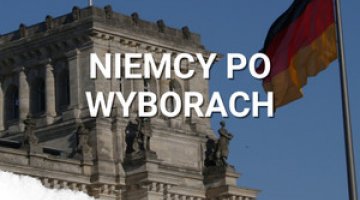The Liberals and the Greens have embarked upon their campaigns ahead of the election to the Bundestag
The Liberal party, the FDP (a partner of the CDU/CSU in the coalition government led by Angela Merkel), ended its congress in Nuremberg on 5 May. The congress settled the party’s manifesto to be presented ahead of the election to the Bundestag scheduled for September this year. The opposition Green Party also announced its manifesto at its congress on 28 April in Berlin. The two parties stand a chance of forming a coalition government after the election: the FDP with the CDU or the Greens with the SPD.
In their electoral manifesto, the Liberals have focused on the introduction of a minimum wage, allowing dual citizenship and the imposition of a limit on electricity prices. The Greens in their agenda propose for example to raise the highest income tax rate from 45% to 49% and to introduce a 1.5% wealth tax. As regards social welfare, they propose to introduce a minimum wage of at least €8.50 per hour and a minimum monthly pension of €850. In the context of the crisis in the eurozone, this party is calling for a rescue fund for financial institutions facing the threat of bankruptcy to be created; it would be financed by banks.
Commentary
- The possibility of these two minor parties forming a government after the election heavily depends on their levels of support: either forming an SPD-Green Party coalition or a continuation of the present coalition. According to pre-election polls, support for the FDP is ranging between 4% and 5%. If it manages to cross the electoral threshold (5%), it can again enter into a government coalition with the Christian Democrats (for whom support has fallen to 37%). Good results achieved by the Greens (their support levels in pre-election polls in April ranged between 14% and 15%) and the SPD (26%–28%) could make a change of government in Germany possible.
- Despite previous announcements that each party would hold its own election campaign, events have unfolded in the traditional way, where the two opposite political camps, the Christian Democrats and the Liberals versus the Social Democrats and the Greens, are competing against one another. The groupings have decided to clearly declare their coalition preferences so as to make the political scene more polarised. Each of the two blocs can expect a level of support of approximately 42%.
- The two large parties (the CDU and the SPD) are currently ruling out the possibility of forming a grand coalition (which would be backed by 64% of voters). However, this is pre-election rhetoric, and this scenario is highly likely. There is also some similarity in the manifestos of the CDU and the Green Party. The two greatest differences concern their visions for the tax system – since the Christian Democrats want to keep taxes at the present, lower level – and their approaches to the equal treatment of homosexual and heterosexual couples). As a consequence, it cannot be ruled out that they could strike a deal, especially considering the fact that a coalition formed by the Christian Democrats and the Greens (52%) could, as with a grand coalition, form a majority in the Bundesrat, the second house of the German parliament. Currently, the coalition of the Social Democrats and the Greens controls the Bundesrat, which makes work harder for the CDU/CSU-FDP government coalition.
- The differences in the manifestos of the political parties are reducing as a consequence of consensus concerning the key issues, such as European policy, the energy transformation (Energiewende) and foreign policy, present among the German public. Furthermore, the CDU, being the governing party, has consistently adhered to the policy of using popular proposals brought forward by opposition parties (for example, ceasing to use nuclear energy or introducing the minimum wage and pension levels). Thus it has been taking votes from the SPD and the Greens.





